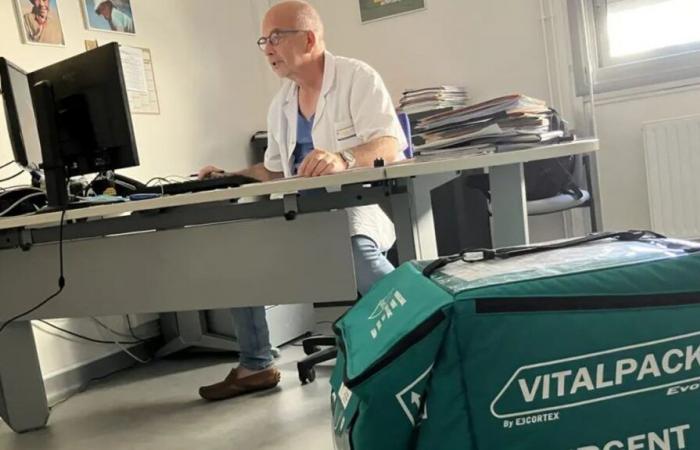Florence is now like the 400 to 500 people on the active waiting list in the Centre-Val de Loire region. Which means that his next transplant will depend on the death of a person already admitted to the intensive care unit. No samples from deceased patients (in a state of brain death) can, in fact, be taken outside this framework.
How long ? The average duration – which in itself means nothing – is between two and three years for a patient with blood group A and between three and seven years for someone with group O. “One thing is certain, this duration is increasing”deplores Professor Venhard (in charge of donations and collections, at the CHRU of Tours).
From 130 to 140 transplants in Tours
With some 45 samples taken each year in its department – and with three or four organs removed each time – 130 to 140 kidney transplants are likely to be carried out in Tours.
The age of the people removed, like that of the people transplanted, has changed significantly. A session from 34e The Ouest Transplant conference (this November 8 at the Palais des Congrès) will also be dedicated to the “elderly subject in organ transplantation”.
But this is not the only concern of professors Büchler (in charge of the organization) and Venhard. When we question the French, 80% are in favor of a transplant but 36% are opposed to donation. “Why this 16% differential”asks Professor Venhard. “People need to express themselves about what they want when they die!” »
“The proportion of people that can be sampled is very low”
Because of the 600,000 annual deaths in France, only 6,000 are recorded under conditions allowing organ harvesting. “The proportion of people that can be sampled is very low”continues his colleague.
Among the subjects also discussed during the congress: cross-donation (between a maximum of three duos at the moment), a strategy to increase the chances of kidney transplants between living people. Other countries are more advanced than France in this area, and this increases the chances of having more compatibilities between donors and recipients.
Ever-growing needs
> Since the first kidney transplant at the Tours CHRU in 1985, the number of patients transplanted and followed in the dedicated department has continued to increase according to an arithmetic growth curve, reaching 3,201 in 2023. At the same time, the number of discharges (return to dialysis, death and new transplant) stands at 1,564.
> Between 2015 and 2023, the number of transplant patients over 70 years old has almost doubled: it was 21 in 2015 and 41 in 2023. The same goes for those over 75 years old (11 in 2015, 23 in 2023); and for those over 80 years old (5 in 2023 compared to only 2 in 2015).
> The number of kidney transplants with deceased donors is much higher than that of those carried out with living donors. Thus, in 2022, there were 50 transplants with deceased donors compared to only one with a living donor. In 2023, the Tours CHRU will have 114 transplants with deceased donors and 19 with living donors.
> The geographical origin of the 133 patients transplanted in 2023 at the Tours CHRU is as follows: 9 were from Cher, 11 from Eure-et-Loir, 6 from Indre, 41 from Indre-et-Loire , 20 from Loir-et-Cher, 27 from Loiret and 19 from other regions.
> Between 2010 and 2017, the number of transplants carried out at the Tours CHRU increased from 110 to 150. It then decreased slightly in 2018 (147) and 2019 (143), falling to 120 (2020) then 130 (2021) in the Covid years. In 2022 and 2023, the number of transplants increased to 133.
> The number of people on the waiting list is 650, but for 30% of them, the transplant may be contraindicated. This is why the so-called “active” list is only 400 to 500 patients in the Central region. A figure that is constantly increasing, however.






